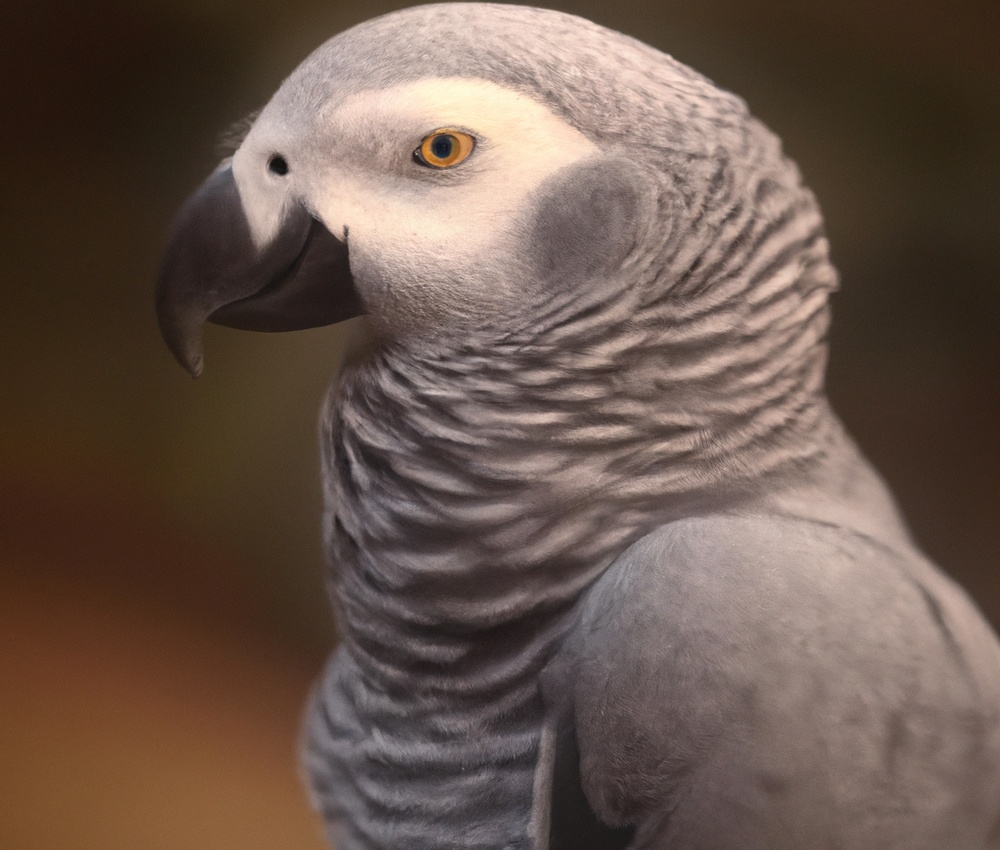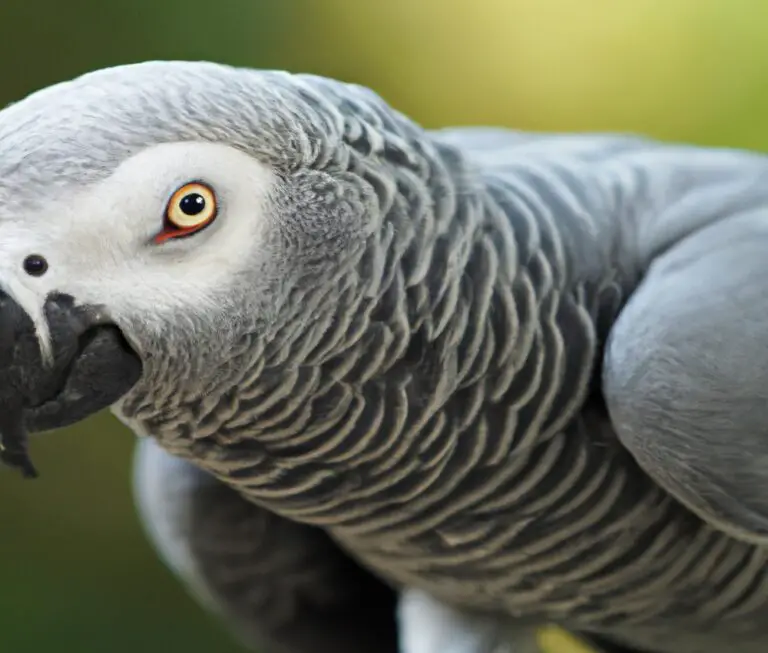How Do African Grey Parrots Communicate With Each Other?
Key Takeaways:
- African Grey Parrots communicate through a wide range of vocalizations and mimicry.
- Their ability to mimic human speech is a unique and complex form of communication.
- They also use body language and gestures to convey messages.
- African Grey Parrots have been observed using context-specific calls to communicate effectively in different situations.
Have you ever wondered how African Grey Parrots are able to communicate with each other? These fascinating creatures have developed a complex system of communication that involves vocalizations, mimicry abilities, and body language.
In this article, we will explore the various ways African Grey Parrots communicate and understand each other.
From their unique vocal repertoire to their flocking behavior and mating rituals, these intelligent birds have an incredibly intricate communication network. So, if you’re curious about how these feathered friends express themselves, join me as we dive into the captivating world of African Grey Parrot communication.
| Method of Communication | Description |
|---|---|
| Vocalizations | African Grey Parrots are known for their remarkable ability to mimic and learn various sounds. They can imitate human speech, other bird calls, and even sounds from their environment. |
| Gestures | These parrots use a variety of body movements and postures to communicate. They may raise or fluff their feathers to show excitement or aggression, or perform head-bobbing and wing-flapping displays to convey different emotions. |
| Eye Contact | African Grey Parrots use eye contact to convey a range of messages. They may use direct eye contact to express affection, trust, or dominance, while avoiding eye contact can signal fear or submission. |
| Dancing | Another form of communication is dancing, where African Grey Parrots rhythmically move their bodies and wings. This behavior is often associated with courtship and bonding. |
| Feather Plucking | In some cases, African Grey Parrots may engage in feather plucking as a form of communication. This behavior can be a sign of stress, boredom, or illness. |
Communication in African Grey Parrots
Communication in African Grey Parrots involves vocalizations, mimicry abilities, and body language.
Vocalizations of African Grey Parrots
African Grey Parrots are highly skilled vocal communicators, using a wide range of sounds to convey messages. They can mimic human speech, imitate household noises, and even create their own unique vocalizations.
The diversity of their vocal repertoire enables them to express their emotions, establish social bonds, and communicate with members of their flock.
From whistles and squawks to melodic tunes and complex phrases, these parrots have a remarkable ability to convey meaning through their vocalizations.
Mimicry Abilities of African Grey Parrots
African Grey Parrots are renowned for their exceptional mimicry abilities.
They can imitate various sounds, including human speech and environmental noises.
These parrots have the ability to mimic with great clarity and accuracy.
They can even emulate the tone and accent of their human companions.
Mimicry is a natural talent for African Grey Parrots, and they use it to communicate and express themselves in their own unique way.
It’s truly fascinating to observe their mimicry skills in action!
Body Language and Gestures of African Grey Parrots
African Grey Parrots communicate through their body language and gestures. Here are some key ways they express themselves:
- Head bobs: They may nod their heads up and down, which usually indicates curiosity or attentiveness.
- Wing flapping: This can signify excitement or a desire to play.
- Feather ruffling: They may fluff up their feathers to show contentment or relaxation.
- Eye pinning: When their pupils constrict and dilate rapidly, it suggests they are feeling threatened or agitated.
- Tail movement: A wagging or fanning tail can indicate excitement, while a tucked tail might mean fear or submission.
By observing these signals, you can better understand what your African Grey Parrot is feeling or trying to communicate. Always pay attention to their body language to build a deeper bond with your feathered friend.

Understanding African Grey Parrot Vocalizations
African Grey Parrot vocalizations provide important insights into their communication.
Types of Vocalizations in African Grey Parrots
African Grey Parrots have an impressive range of vocalizations to communicate with each other.
These include:
- Vocal Mimicry: African Greys are known for their ability to imitate human speech, animal sounds, and even household noises. They can mimic tones and accents with remarkable accuracy.
- Whistling: These parrots often produce whistling sounds to grab attention or express curiosity. It’s their way of getting noticed among their feathered friends.
- Contact Calls: African Greys use contact calls to maintain communication with their flockmates. These calls vary based on their environment, location, and social interactions.
- Chirping: Similar to other bird species, African Greys use chirping as a way to communicate. These chirps can indicate happiness, contentment, or even distress.
- Screaming: When African Greys feel threatened or stressed, they may scream as a form of vocal communication. It serves as a warning signal to other parrots and potential predators.
Understanding these vocalizations can help you better communicate with your African Grey Parrot and decipher their needs and emotions.
So, pay attention to their unique sounds and respond accordingly.
Meaning and Context of African Grey Parrot Vocalizations
African Grey Parrot vocalizations carry significant meaning and context.
These intelligent birds use their wide range of sounds to communicate various messages.
For example, a loud screech may indicate danger or a need for attention.
Soft whistles and mimicry of human speech are often signs of contentment and affection.
African Grey Parrots also use vocalizations to establish territory and call for their flockmates.
Understanding these vocalizations can help us better communicate and bond with these remarkable birds.
Social Interactions among African Grey Parrots
African Grey Parrots engage in complex social interactions with their flock members.
Flocking Behavior of African Grey Parrots
Flocking behavior is a significant aspect of African Grey Parrots’ social interactions. These parrots exhibit strong group dynamics and often gather in large flocks.
Within the flock, they communicate through vocalizations, body language, and physical contact.
Flocking helps them find food, protect against predators, and strengthen social bonds. They showcase remarkable coordination during flight, displaying a synchronized movement pattern.
Understanding their flocking behavior can provide valuable insights into their social structure and communication strategies.

Hierarchies and Dominance in African Grey Parrots
Hierarchies and dominance play a significant role in the social interactions of African Grey Parrots. They establish a clear pecking order to maintain order within their flock.
Dominant birds tend to have preferential access to food, mates, and resources.
Communication, such as posturing, vocalizations, and behavior, is essential in establishing and maintaining these hierarchies. Aggressive displays and physical confrontations are used to assert dominance.
Understanding this aspect of their social behavior is crucial for providing appropriate care and managing multiple parrots in a household.
Pair Bonding and Mating Behavior of African Grey Parrots
African Grey Parrots form strong pair bonds and exhibit complex mating behavior.
Courtship Displays of African Grey Parrots
Courtship displays play a vital role in the mating behavior of African Grey Parrots. These displays include head bobbing, wing fanning, and vocalizations.
Through these actions, the male parrots demonstrate their fitness and attract potential mates.
The females evaluate these displays and choose a partner based on their preference. Courtship displays allow African Grey Parrots to communicate their availability and interest in finding a mate.
Nesting and Breeding Habits of African Grey Parrots
African Grey Parrots are known for their complex nesting and breeding habits.
These intelligent birds generally prefer to nest in tree cavities in the wild.
However, they also adapt well to nest boxes or other enclosed spaces in captivity.
The female parrot takes on the task of incubating the eggs, while the male provides food and protection.
Once the chicks hatch, both parents are actively involved in feeding and raising them.
These birds have a long breeding cycle and can take several years to reach maturity.
Providing a suitable nesting environment is essential for successful breeding.

Parental Care in African Grey Parrots
Parental care in African Grey Parrots involves incubation, feeding, and rearing of their chicks.
Incubation and Hatching of African Grey Parrot Chicks
African Grey Parrot chicks are hatched from eggs that are incubated by their parents. The incubation period typically lasts around 28 to 30 days.
During this time, the parent birds take turns sitting on the eggs to keep them warm and provide the necessary environment for proper development.
Once the chicks are ready to hatch, they use their egg tooth to break through the shell. The parents assist them by removing any remaining shell fragments and help them out of the nest.
This delicate process ensures the survival and well-being of the African Grey Parrot chicks.
Feeding and Rearing of African Grey Parrot Chicks
Feeding and rearing African Grey parrot chicks is a crucial task for their growth and development.
To ensure their well-being, provide a balanced diet of pellets, fresh fruits, vegetables, and seeds.
Feed them small, frequent meals throughout the day and make sure to include calcium supplements.
Create a warm, safe environment with appropriate nesting materials and keep a close eye for any signs of illness or distress.
Regular vet check-ups and social interaction are also important.

FAQs about African Grey Parrot Communication
Can African Grey Parrots understand human speech?
African Grey Parrots are renowned for their exceptional ability to understand and mimic human speech. Their advanced cognitive abilities allow them to comprehend the meaning behind words and phrases, making them excellent communicators.
They can recognize specific objects, identify people, and even engage in basic conversation.
This unique talent sets African Grey Parrots apart and makes them a popular choice as pets for those seeking an interactive and engaging companion.
Why do African Grey Parrots mimic sounds and voices?
African Grey Parrots mimic sounds and voices as a way of communication and social interaction. They have the ability to mimic human speech, other animal sounds, and even household noises.
Mimicking helps them bond with their human companions and it also allows them to express themselves.
They are highly intelligent birds and mimicking sounds is a natural behavior for them. Mimicking also helps them to survive in the wild by imitating the sounds of their environment.
So, whether it’s imitating your voice or mimicking sounds in their surroundings, it’s all part of their natural instincts and social behavior.

Can African Grey Parrots communicate with other bird species?
African Grey Parrots are known for their exceptional communication abilities. They have the capacity to mimic and imitate sounds, including the vocalizations of other bird species.
While they may not fully understand the meaning behind these vocalizations, they are able to replicate them accurately.
This allows them to “communicate” with other bird species on a vocal level. However, it’s important to note that the communication is one-sided, as other bird species may not respond or understand the African Grey Parrot’s vocalizations in the same way.
Final Verdict
African Grey Parrots have a fascinating and complex communication system that involves vocalizations, mimicry, body language, and social interactions. They use various types of vocalizations to convey information and express their needs and emotions.
Their ability to mimic sounds and voices allows them to imitate human speech and other environmental sounds.
African Grey Parrots also engage in flocking behavior, establish hierarchies, and form pair bonds during mating. They exhibit exceptional parental care, from incubation and hatching to feeding and rearing their chicks.
Understanding and respecting their communication methods is crucial for building a strong bond with these intelligent and social birds.
So, whether you are an owner or admirer of African Grey Parrots, take the time to learn their language and create a fulfilling and enriching communication experience with these remarkable creatures.







